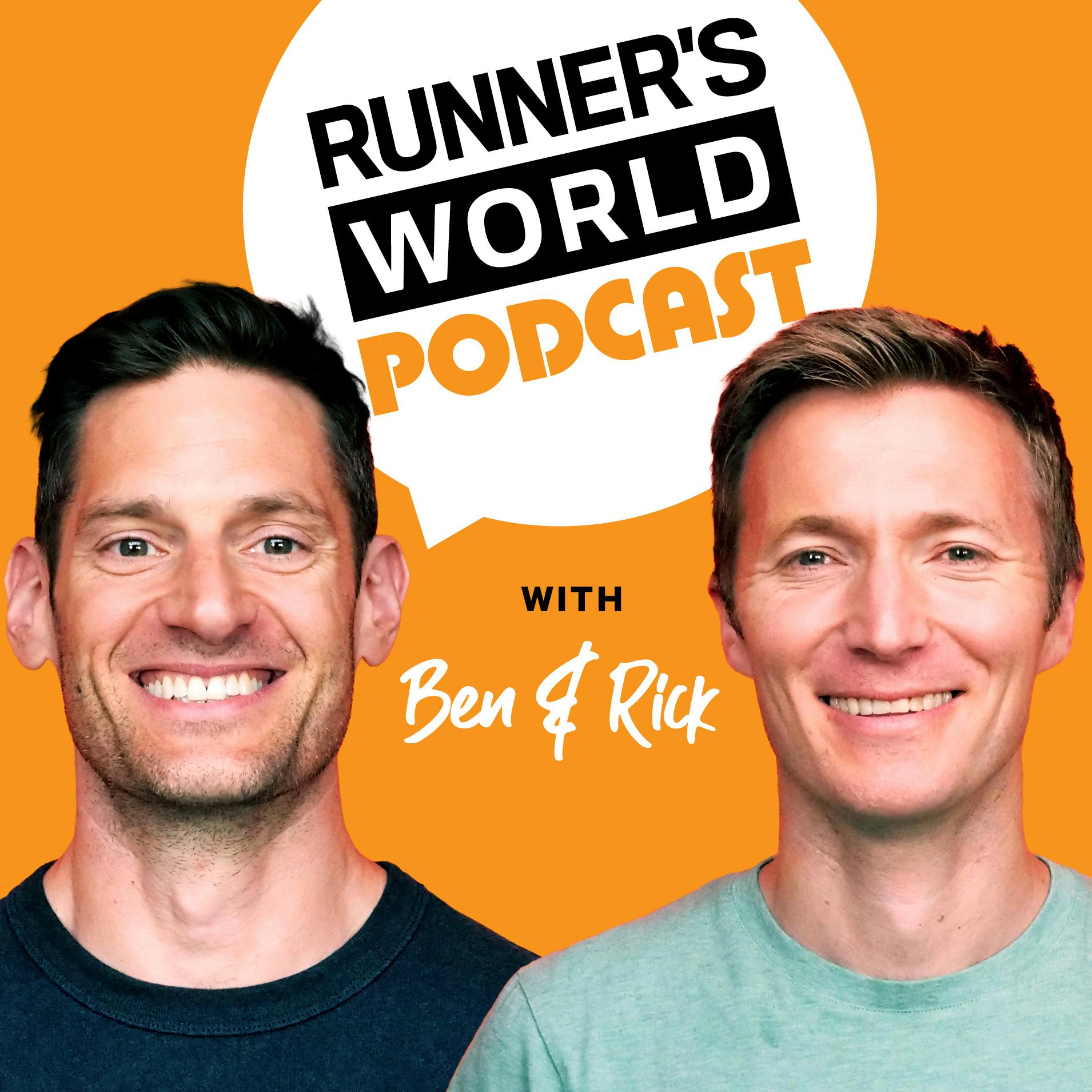
Brian's Run Pod
Welcome to Brian's Run Pod, the podcast where we lace up our running shoes and explore the exhilarating world of running. Whether you're a seasoned marathoner, a casual jogger, or just thinking about taking your first stride, this podcast is your ultimate companion on your running journey.
Join us as we dive deep into the sport of running, covering everything from training tips and race strategies to personal stories and inspiring interviews with runners from all walks of life. Whether you're looking to improve your race times, stay motivated, or simply enjoy the therapeutic rhythm of running, Brian's Run Pod has something for every runner.
Brian's Run Pod
Elevate Your Run: Mastering the Art of Hill Training
Ever wondered how conquering hills could revolutionize your running game? Strap on your sneakers and get ready to elevate your performance. From sharpening your technique and increasing your speed to building brute strength and improving both aerobic and anaerobic capacities, we've got you covered. We're not just talking about a one-size-fits-all approach; our discussion traverses the landscape of hill training, ensuring there's a challenge suited for every runner, whether you're sprinting over short ascents or enduring the long, grueling climbs.
Hill training is more than just an uphill battle; it's a finely-tuned strategy that can protect seasoned runners and beginners alike from the woes of injury. We'll walk you through techniques to maintain your form when the slope gets tough and share key insights on how to utilize recovery periods effectively. Whether you're pounding the pavement or hitting the treadmill, you'll learn how to make the most out of every incline and why integrating these sessions could be the secret ingredient your training regimen has been missing.
Lucy Tomlinson Christmas Offer for Welcome Pilates
Brian's Run Pod has become interactive with the audience. If you look at the top of the Episode description tap on "Send us a Text Message". You can tell me what you think of the episode or alternatively what you would like covered. If your lucky I might even read them out on the podcast.
Instagram
So you're thinking about running but not sure how to take the first step. My name is Brian Patterson and I'm here to help. Welcome to Brian's Rompod. Welcome back to Brian's Rompod, and at the time of recording it's a little bit gloomy. The sun is trying to peek out and I am in a bit of a purple patch concerning injury. So my running is not going that well. I have a bit of a sore back and my knee is not right. Plus, my calf is a bit tender as I'm just getting over a night cramp, and on top of that my fitness has sort of hit rock bottom. Anyway, enough about me. Anyway, this I think, maybe for a future episode we'll delve deeper into how injury can affect our state of mind and maybe some preventative measures.
Speaker 1:Well, this week's episode we're going to be talking about hill training for runners. So, going over the show notes, we're going to be talking about who should do it. So what are the benefits, what are the different types of hill training, how often? More examples of a hill training, proper hill running form, and then we'll look at running, doing hill training on the treadmill. The end we'll put everything together as a summary. So who should do it? Well, any runner can benefit from hill training. However, if you're planning on doing a distance race, inner hilly, city or cross country route, building a hill into your preparation is vital. It will get you used to the intensity of the climbing slopes and tackling declines and give your calf muscles more experience with the strains that running uphill puts on them. So what are the benefits of hill running? Well, according to coach Tim from weruncom and I will include all links in the show notes Hill running is beneficial to all track and field athletes.
Speaker 1:He says that the father of one of his athletes tells of how he used to see Colin Jackson, a Welsh sprinter, sprinting up the hills near Cardiff. Even throwers use short, steep hills to build up the power in their legs and you find it very hard to find an elite middle or long distance runner who doesn't do hill sessions. At some point during the year, seb Coe, the Olympic champion, really earned his world records and Olympic titles from some 40 times 100 meters at a 10% gradient hill sessions. Yes, you read all those eye-watering numbers correctly, and those Kenyans were swayed by the long runs over hills in the Rift Valley in Kenya. I remember reading a middle distance coaching book in my teens and seeing a picture of Steve Over, who, by the way, I consider to be the most effortless and graceful runner ever in middle distance history, running up San Junes and Wales. Anyway, coach Tim goes on to say Hill running improves your technique by encouraging you to engage your arms, raise your knees higher, and it promotes greater ankle flexibility.
Speaker 1:Hill running also builds your speed. You have fast, medium, slow twitch fibers in your muscles. You engage in the same fast twitch fibers running up hills as you do by completing a faster track workout. Running hills will also help you strengthen the muscles in and around your glutes and legs, making them more able to run for longer without tiring. Your heart rate will also pick up as you run up hills, which will improve your aerobically and anaerobically. Hill running really pushes your powers of recovery, which you'll find helps with doing any interval work. You do so fairly always, but often overloads. Running on hills will prepare you for races with hills in, so you'll notice yourself powering past other runners who have done less hills than you have.
Speaker 1:In an article another article written by Matt Millan running the following beneficial for any runner. So you will also boost your VO2 max, better handle lactic acid build up and preview leg turnover when coming down a hill. Learn effort, since effort is more important than pace or heart rate in hill workouts. Develop more mental toughness. Break up the boredom of just running easy all the time. And he says categorically that his friends is has a wide range of fitness improvements for runners. So basically, lots of bang for your buck. So, plus the article that goes on to say hill running is also diverse in how a runner or coach can insert hill training into their regular training. So most coaches, like himself, will use hill training in four key ways introduction to faster running for new runners, as mentioned before, as a training phase before beginning a speed workout. As a speciality workout within a training plan to get you ready for a hilly race. And as a way to get a big fitness boost using an effort-based workout.
Speaker 1:So what are the different types of hill session? Generally, the shorter the distance you're training for, the shorter and steeper the rep. So, however, if you're new to hill running, it's best to build up from the steep gradients and even if you are training for a fairly short race short hills these may take 20 to 30 seconds to run up. Medium hills maybe 40 to 90 seconds to run up and long hills. These will take 90 seconds. There's thing called Kenyon hills and these are long reps where you run a loop which involves a hill. You run hard on the uphill and flat sections and recover on the downhills. When you get back to the starting point, you continue running as reps, as defined by the time, as opposed to distance or circuits. The time for each of each rep tends to vary from three to ten minutes. So there's treadmill hill running.
Speaker 1:Many treadmills have a selection of pre programmed hill workouts you can try, and this can be useful if you live in a flat area or if it's ICL side or the weather's not great, and we will cover this later. Stairs or steps there are also exercise machines in your local gym where they do stairs. Another option for those living in flat areas is running up the stairs or steps instead of steep hills. Downhill sessions these have their purpose, as you feel you need a much more confidence or better downhill running technique, otherwise avoiding them as they put extra stress on your legs. So how often should I do hill training? First of all, you might be saying to yourself, supposing I live in a very flat area. Well, according to assiscom, hill training we all don't live in hilly places. Although not every drill requires a 45 degree gradient, even a gentle slope in your local park will give you something to get started with If you're a member of a gym. One option is to set a treadmill to a steep gradient, and this will give you many of the same benefits that hill running does without having you to try and find a slope. Also, if you look online to stats like Strav or any other online monitoring app, you may be able to create a route that has a steep gradient, because they do publish the gradients in and around your area.
Speaker 1:Now back to how often. Like any intensive exercise, it's best to gradually build up the amount you spend training on hills. To begin with, it can be pretty tough and you don't need to do more than a few sets once per week. However, over time, you will be able to increase this to a couple of times per week, especially if you're training for a race in a hilly location, and you're going to need to build up to that point where at least half of your training involves at least some form of hill work. Any hill training guide for runners online will help you at some kind of direction as to how I go, how to go about it. But, like we said, this is an intensive exercise, so don't fully have to jump in and do a sebco type hill sessions, as you might think so, otherwise you are likely to get injured. Plus it may take you a couple of weeks to get over the hill session. So it's vital just to take things easy to start with.
Speaker 1:So let's have a look at some maybe some more examples of hill training. There's the long hill repetitions. Long hills are performed on a gradual slope and last around two to three minutes. You're on a medium hard. Effort Should be like around 10K effort, if you can sort of gauge that, and at the top you just turn around and jog slowly back down to the bottom of the hill before beginning again. Just run as fine. The four to eight repetitions are optimal for a long hill workout. And every now and then pick up the pace on the downhills for a bit to find your best downhill running technique and don't be too too much of this faster downhill running, but in small doses downhill running helps you find your best technique.
Speaker 1:So no, hill workouts are effort based, not pace based. As you might know, it's kind of maybe satin. The obvious you run slower up the hills. The main metric is that you should feel like a given race effort and in the long hills above, for example, the effort is roughly about 10K race effort, so not 10K pace. So focus on good form and a powerful push off and strong arm swing. Jog down the hill slowly to recover, and you can also practice downhill running technique by running down the hill occasionally at a 10K race pace. But I think the important thing is is just to set your effort based on the type of hill that you have in front of you, especially if it's a longer hill, and then you probably you know you could gauge whether that is kind of a 10K race effort. So, as I said, just be sort of just be mindful when you're going down and down the hills as well when you're running downhill.
Speaker 1:Medium hill repeats, medium hills performed on a moderately steep slope for at least for 40 to 60 seconds. The effort is hard, which is around 5K race effort for most runners, as with long hills, ones at the top, you just simply turn around and then jog down as you recover before starting the next repeat. Maybe eight to 12 repetitions works well for medium hills. Again, a note here is that some runners aren't used to effort based training. So here is a hill worker you should feel. Let's use a medium hill repeats as an example. This worker is to feel like a 5K effort. So the first few repeats should feel like the first mile of a 5K fast but controlled, and you can hurry your breath on the recovery jog downhill the effort. The middle few repeats should feel like the middle of a mile or a 5K getting harder breathing, laboured legs, feeling heavy and harder to recover on the downhill. And the last few repeats should feel like the last mile of a 5K. So we require lots of mental focus to keep pushing and to keep your form from breaking down and you're breathing very heavily and may need a few seconds to catch your breath before the jog downhill.
Speaker 1:Steep hill repeats as the name suggests, steep hills are performed on steep hill. However, they only last about 10 to 15 seconds, so they are over very fast because they are short and steep and the effort is very hard around about a mile pace effort for most runners and the idea behind this is a very short, steep hill repeats, as you really recruit a large portion of your muscular power during running, even fast running. So these efforts help train these full recruitment of muscle fibres which may help in performance and injury prevention. Hill circuits this workout was popularised by the legendary coach Arthur Lidiada. Now we've covered Arthur Lidiada in the past episode. In the hill circuit you not only run up the hill as in the other workouts, but you include other elements throughout the circuit. In Lidias famous hill circuit his runners would run strongly up and then moderately sloped hill, then recover at the top. Once recovered they would do several short sprints, strides to build leg speed before running strongly downhill. Once at the bottom, they recover again before doing more strides. If you have a hill that has a flat running at the top, I recommend you include Lidias hill circuit in your plan.
Speaker 1:Long Hill climbs a frequent workout athletes workout for athletes coached by Greg Macmillan used at his camp. They had a 20k, 12.5 mile hill that the athletes rang strongly up once per week and it wasn't a race, but it was a very strong effort that lasted over an hour. Most coaches have found that any long hill climb that lasts between 30 minutes to an hour works great. Of course you have access to such a hill, so this type of workout is usually unavailable to runners living in mountainous areas. Maybe this one is recommended for those starting out, as you may not find such a hill. Sorry, this, maybe this isn't recommended for is not recommended for those starting out, as you may not find such a hill in your local area.
Speaker 1:Proper hill running form. There is no one uphill or downhill running form for all runners, but you need to find the form that works best for you. So Greg Macmillan, in his article, encouraged you to play around with your uphill and downhill running technique during these workouts. Lean more forward, then then more backward. On some, think about lifting your knees at times, then on other repeats. Focus on more of your back kick. Do the same with your arms, higher on some, lower on others. So play around, experiment and see what works best for you. As a guide on the uphill running form, here are the four key points to improve in your uphill running form Posture on the uphills Lean into the hill.
Speaker 1:You still want to run tall, but your body should lean against the slope of the hill as you charge up the hill. And also make sure to look up. The tendency is to look down at the ground, but keep your eyes and head up. Look at the top of the hill and you find you will stay in a tall posture and lean into the hill correctly. Reference to arm swing the legs do what the arms do, so pump your arms more vigorously up the hills and you maintain a better pace In terms of your cadence. Faster and shorter strides are typically better than the long strides on an uphill. With reference to knees and feet, experiment with your lifting your knees to power up a hill. Or alternatively, some runners find that if they push hard with their feet against the ground, that works better.
Speaker 1:Now, in terms of downhill running form. When it comes to downhill running form, things change a little bit from uphill running form. So the posture, instead of leaning into the hill like uphill running form, on on the downhills you lean with the hill. You want to keep your body as perpendicular to the ground as possible so you can let gravity take you down the hill. Some runners find that if they push their hips forward or think leaning from the ankles, they get a better downhill running position. In terms of the arm swing, the big mistake runners make on the downhills is to raise your arms and shoulders. That's a big no. No. Instead, lower your arms. This help you avoid leaning backwards, which is also a big no no.
Speaker 1:On downhills, cadence and foot plant. As with uphill running, shorter, faster strides work great on downhills. A longer stride often encourages overstriding, causing a great deal of stress on the musculoskeletal system. Runners often find that to avoid overstriding, a focus on the midfoot landing helps, and also this might help with your cadence in just regular flat running as well and the in terms of run behind. Whereas up on the uphills you may think about lifting your knees on, on the downhills you may want to about think about your back kick focus on your backside mechanics, as they call it. It helps you leaning with the hill and gently results in a faster, much faster downhill pace, fast and efficient. The last point on the downhill running form is that you need to have two kinds. One is for going fast, typically leaning more with the hill and a quick cadence works great. This type of downhill form is essential for racers that finish on a downhill and you'll fly by the other runners.
Speaker 1:Now running on a treadmill. As promised, let's talk about the right way to practice running on a treadmill and why it's essential to incorporate hill training into your running routine. When we think about hills. They might sound challenging, but they do burn more calories, improve your running form and strengthen your muscles simultaneously Pretty amazing.
Speaker 1:But when it comes to practicing on a treadmill, things can get a bit tricky. Jessica Munster, an active trainer, clarifies treadmill's inclination can sometimes be sharper than the hills we encounter outdoors. However, do not get demoralised. It's all about the correct approach and commitment. And so let's talk about how we can do that. First and foremost, focus on form. When you're running uphill on the treadmill, avoid leaning back. Remember that the higher the hill, the more you should be leaning forward and driving from your knees. Munster suggests that the body should be over your knees to ensure your joints are correctly aligned. Keep your chest lifted, your shoulders rolled back to maintain a healthy posture and facilitate easier breathing.
Speaker 1:Next comes an essential part Most of us might ignore our arms. They carry a significant role in balancing our strides and can heavily impact on our performance. Munster discourages the holding onto the side of the front or side rails, as it may lead to knee problems, and she advises pumping our arms more intentionally, since faster arm movements encourage quicker strides. Adjust your incline. So what percentage incline constitutes a hill? It totally depends on what type of workout you want.
Speaker 1:Think of 1% incline as your starting point for a flat road workout and it's something that I do if I'm on the treadmill. If I'm just going for 3-5K or whatever as a warm-up, then I'll just do add a 1% incline. Munster suggests that dialing up to 2-3% and keeping it there for a quick pace but steady workout like a tempo run. The incline is small but holding it for an extended period will amp up your fitness and doing this builds your strength and will help you get faster on the flats For a hill walking workout. Pump up the incline even further to get your heart rate up. Shift up and down as you needed between 5-10% incline. That higher incline is super beneficial and will get you into the fat burning zone.
Speaker 1:If you are going at a slow pace, don't skip recovery. Don't forget about the best part is the downhill in between tough sections of hills during a one. Munster suggests working in a recovery period. Lower the incline and slow your pace. On an outdoor run, the decline is harder on your joints and muscles than on a treadmill.
Speaker 1:Since you're missing the downhill on a treadmill, most don't have a decline setting. It's a good idea to add some leg strengthening moves like lunges and squats, to your routine after you finish your run. There are some ideas there in terms of treadmill running and it's good to include that if the conditions outside are receptive to running outside. If you are a local gym, most treadmills do have a hill program or you can just make one up, do your own one and decide on when to increase the incline or not. In summary, if you're one for intensive workout, then hills might be your thing. It seems to me that if you have a hill near you, it's just as good as doing any strength training or hill workout at a local gym. If you don't have hills, then I hope you have told you about some of the benefits of hill training on a treadmill. I've included links to these articles in the show notes. If you want to spice up your workout, please do have a go.
Podcasts we love
Check out these other fine podcasts recommended by us, not an algorithm.

Life Changing
BBC Radio 4
Tech Life
BBC World Service
Runner's World Podcast
Runner's World UK
Buzzcast
Buzzsprout
Newscast
BBC News
Understand
BBC Radio 4
Cyber Hack
BBC World Service
Ghost Story
Wondery | Pineapple Street StudiosDiz Runs Radio: Running, Life, & Everything In Between
Join Denny Krahe, AKA Diz, as he talks with a variety of runners about running, life, and everything in between.
Uncharted with Hannah Fry
BBC Radio 4
The Global Story
BBC World Service
The Coming Storm
BBC Radio 4
Lives Less Ordinary
BBC World Service
Do Epic Shit Today Podcast
Hannah Mulhern
The Rest Is History
Goalhanger
